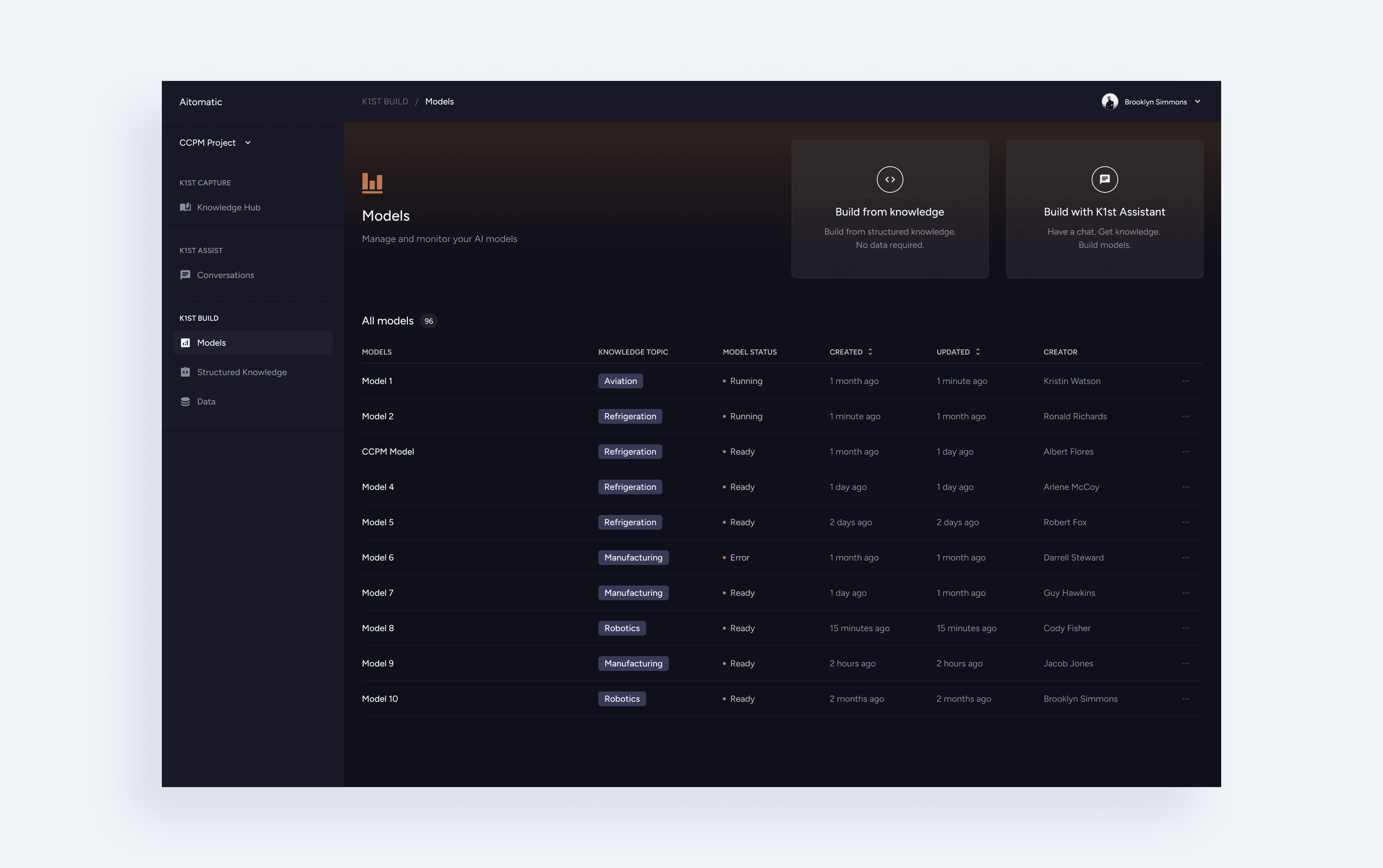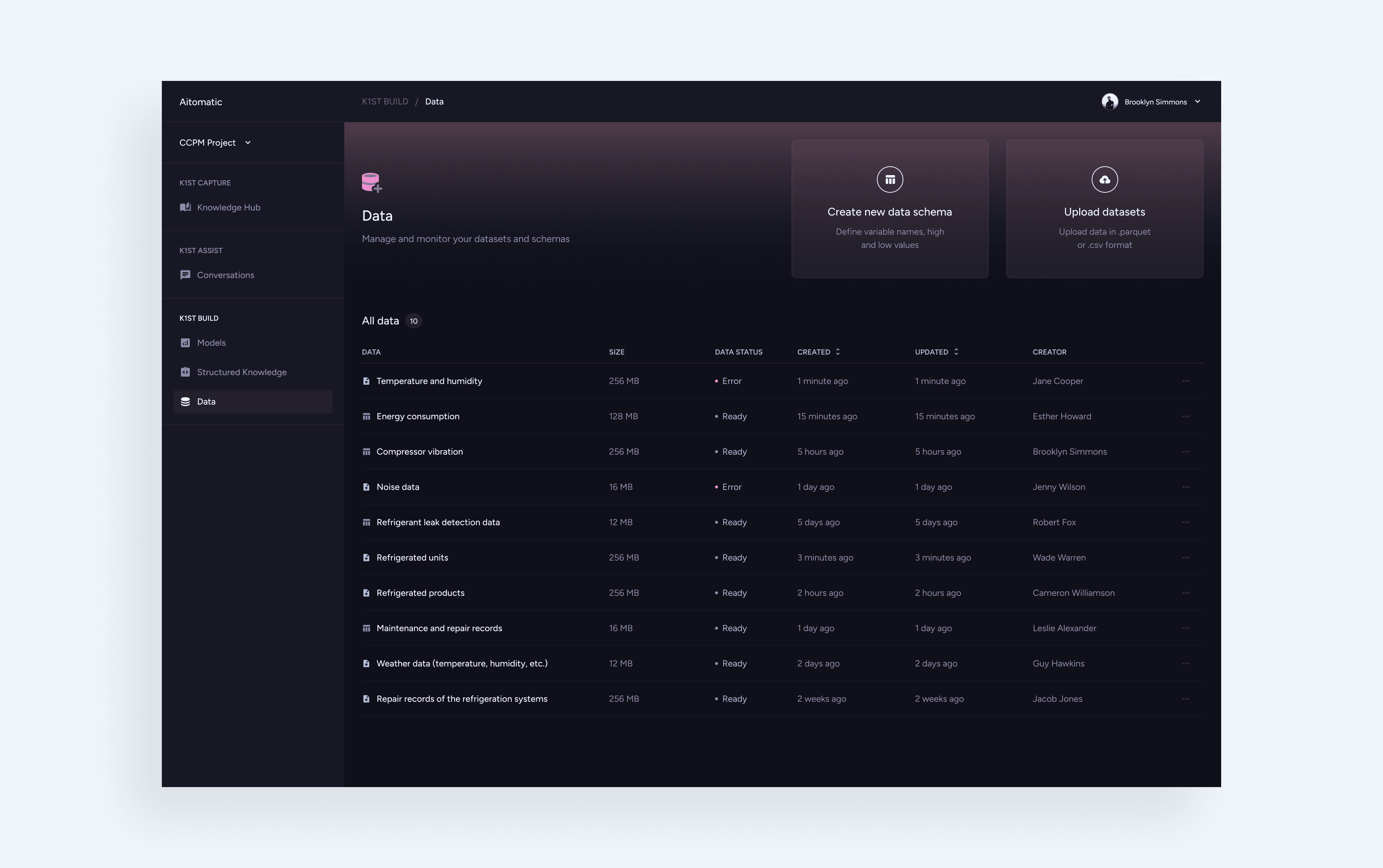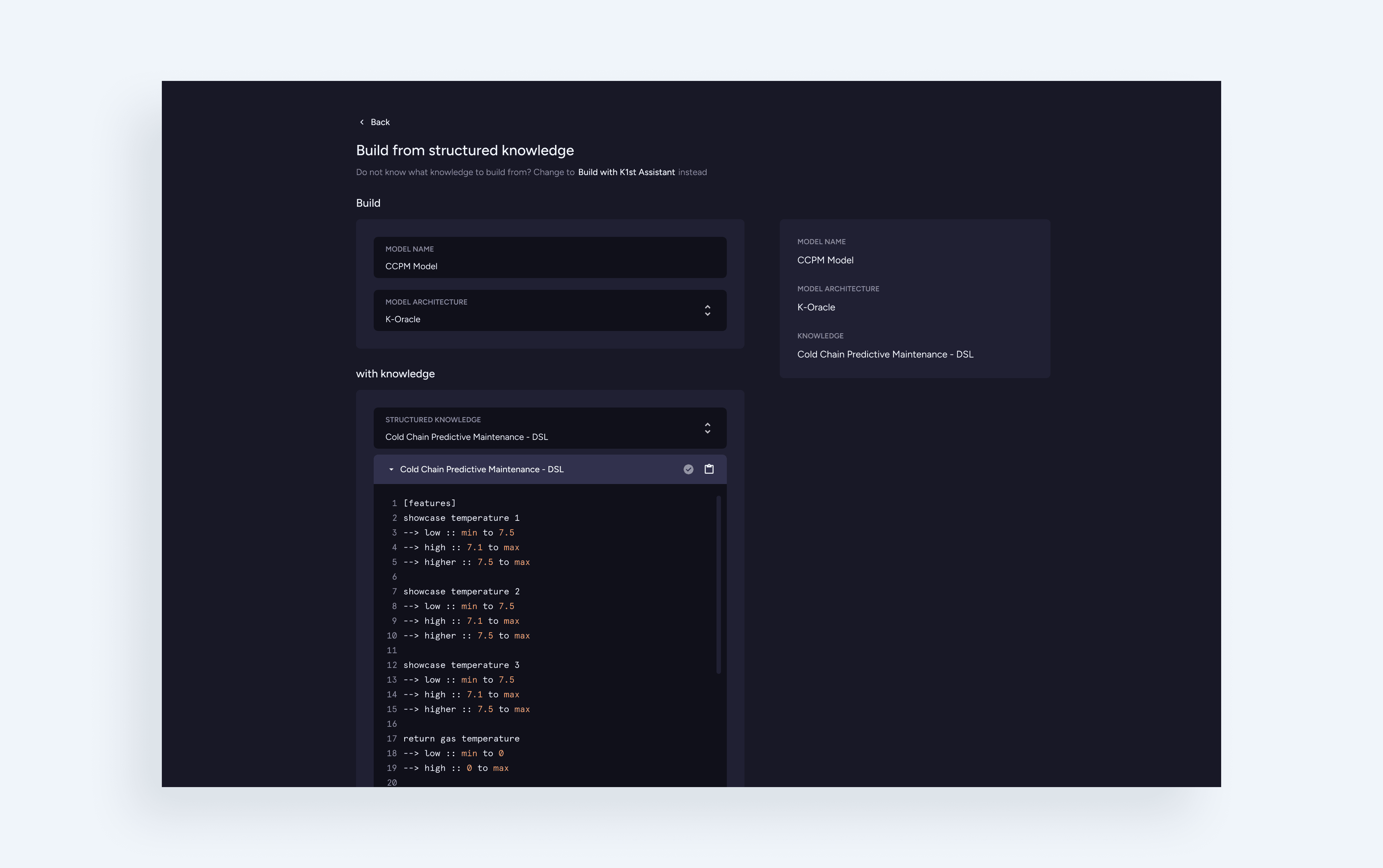The Problem: Data-Heavy and Time-Consuming Workflows
Design Approach: Leveraging Human Expertise Over Data
How K1st BUILD Solved These Challenges
Key Workflow Improvements: Before and After K1st BUILD
Before K1st BUILD, AI engineers like Phuoc and Zhang Yu were bogged down by incomplete datasets and manual data preparation tasks. They had to repeatedly rely on back-and-forth communication with domain experts to extract knowledge and apply it to their models.
After K1st BUILD, these AI engineers can apply expert knowledge, bypassing the need for large datasets. The knowledge system provided real-time access to expert insights, and applied these insights to model development, eliminating operational delays.
Prototype and Feedback
After presenting the early prototype of K1st BUILD to Zhang Yu and his team, I gathered detailed feedback that shaped the final design.
Here’s what we learned:
Zhang Yu found the tool easy to use for tuning existing models and integrating new data streams. The simple interface allowed him to implement changes without needing extensive support.
Guan-san, the domain expert, appreciated how quickly and easily he could share his knowledge with the engineering team. This integration made it possible for Zhang to work more independently.
I co-worked on the UI with front-end engineers, ensuring a smooth handoff with a clear design checklist. Within three months of joining Aitomatic, I created a design system for K1st BUILD, incorporating user feedback and insights.
Impact
The introduction of K1st BUILD had a significant impact on how AI engineers built models, as it fundamentally changed the way they worked by prioritizing expert knowledge over data:
With expert knowledge capture tools, Zhang Yu was able to build models 30% faster, as he no longer needed to wait for large datasets or spend hours cleaning data.
Models built with expert knowledge were 15% more accurate, as they incorporated domain-specific rules and insights that data alone couldn’t provide. This led to more reliable predictions and better outcomes in predictive maintenance.
K1st BUILD created a collaborative space where engineers could seamlessly integrate expert knowledge into their models, strengthening the relationship between them, resulting in higher-quality models and more efficient workflows.
Reflection
My role in K1st BUILD was to design a tool that not only simplified the AI engineer’s workflow but also fundamentally shifted how models are built—from a data-centric to a knowledge-centric approach. I ensured that K1st BUILD would position AI engineers to build more accurate models without the need for extensive datasets.
This project reinforced my belief in the power of human-centered design, as K1st BUILD’s emphasis on human expertise proved that thoughtful design can significantly improve the productivity and experience, even in highly technical environments.












